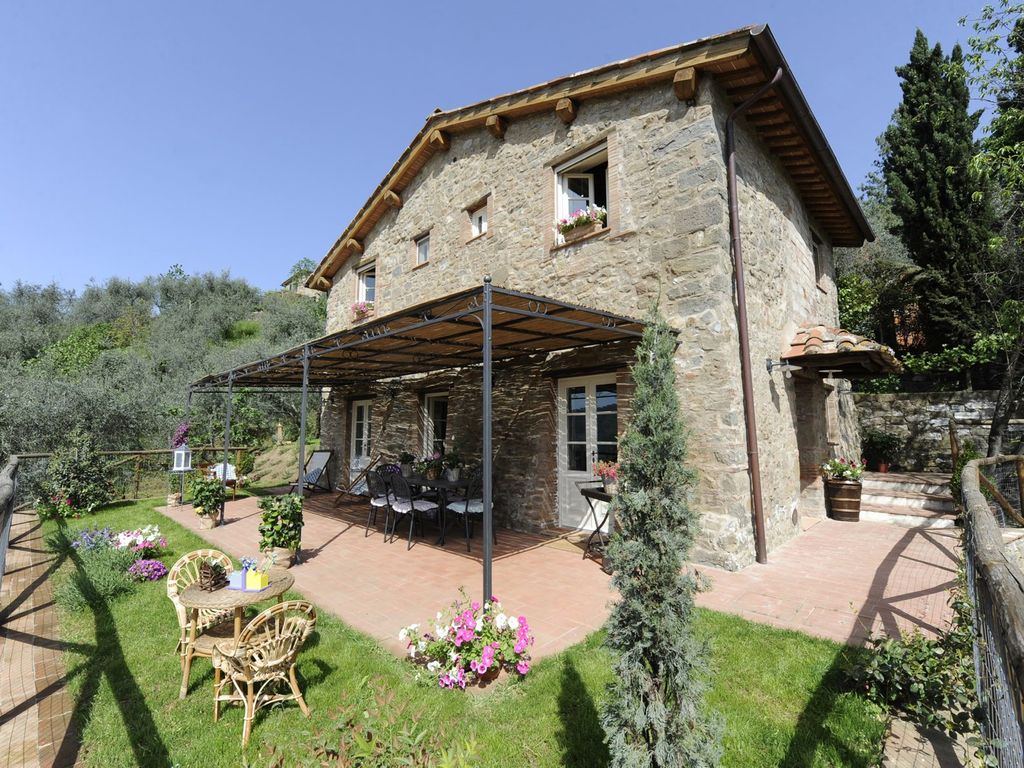“Jesus saw Nathanael coming to him, and saith of him, Behold an Israelite indeed, in whom is no guile! Nathanael saith unto him, Whence knowest thou me? Jesus answered and said unto him, Before that Philip called thee, when thou wast under the fig tree, I saw thee. Nathanael answered and saith unto him, Rabbi, thou art the Son of God; thou art the King of Israel.” – John 1:47-49 (KJV)
- Ad Click Here --> Civil Defense ManualNOW BACK IN STOCK How to protect, you, your family, friends and neighborhood in coming times of civil unrest… and much more!
- Ad STRATEGIC RELOCATION REALTYFOR SALE: Self-sustaining Rural Property situated meticulously in serene locales distant from densely populated sanctuary cities. Remember…HISTORY Favors the PREPARED!
Preparedness Notes for Saturday – November 25, 2017
November 25th is the birthday of economist and comedian Ben Stein. His unscripted monologue on economics from Ferris Bueller’s Day Off is one of the most memorable scenes in American cinema. By the way, Stein spends part of each year at his second home in Sandpoint, Idaho, so he is an honorary Redoubter. I’ve heard that he plans to retire here.
o o o
We are coming down to the wire on round 73 of the SurvivalBlog Writing Contest. If you would like to submit your article for a chance at the fantastic prizes listed below, finish it up and get it submitted to us. We still have a few openings left this contest round.
o o o
As long as on-hand supplies last, Ready Made Resources is having a sale on autogated 3rd Generation high grade tube PVS-14 monocular/weapon sights from Night Vision Devices. They have a minimum of 64 line pair resolution! They are bargain priced at just $2,899 with free shipping, a full set of accessories (including head mount and case), and a generous return policy.
Continue reading“Preparedness Notes for Saturday – November 25, 2017”
- Ad LifeSaver 20K JerryCan Water PurifierThe best water jerrycan you can buy on the market! Mention Survivalblog for a Free Filter ($130 Value)
- Ad Civil Defense ManualClick Here --> The Civil Defense Manual... The A to Z of survival. Looks what's in it... https://civildefensemanual.com/whats-in-the-civil-defense-manual/
Potatoes—A Staple for Food Storage With No Refrigeration, by Back Yard Gardner
Growing and storing potatoes in the Northwest through the winter months always brought unsatisfactory long-term storage results. It didn’t matter how I stored the potatoes after digging, whether in dry sawdust, under a layer of newspaper, on a dark cool dry shelf, all had similar results of shriveling and sprouting potatoes before the stored crop was used up.
An Experiment For Stored, “Fresh” Potatoes
I tried an experiment with the 2016 potato crop. Once I dug the Kennebec potatoes in April of 2017, the results of wonderful plump potatoes spurred me to store the 2017 potatoes crop the same way. No more shriveled up potatoes. I can dig the potatoes with my hands or a shovel when potatoes are needed in the kitchen. It’s just minutes from garden to kitchen, so that means fresh! Let me explain this new revelation that’s such a success…..
Continue reading“Potatoes—A Staple for Food Storage With No Refrigeration, by Back Yard Gardner”
- Ad USA Berkey Water Filters - Start Drinking Purified Water Today!#1 Trusted Gravity Water Purification System! Start Drinking Purified Water now with a Berkey water filtration system. Find systems, replacement filters, parts and more here.
- Ad SIEGE belt: the original unmatched action belt. Proven in many unexpected situations on wearers' daily routines & travels. Engineered for extreme durability, performance, comfort & stunning looks. The only effective EDC you can take anywhere.SIEGE STOVES: prep for adventure/crisis with the ultimate ultra-compact survival stove. SIEGE BELTS: prized by those in the know. Blazing fast. Stunning appearance. USA-made.
The Editors’ Preps for the Week
To be prepared for a crisis, every Prepper must establish goals and make long-term and short-term plans. Steadily, we work on meeting our prepping goals. In this column, the SurvivalBlog editors review their week’s prep activities. They also often share their planned prep activities for the coming week. These range from healthcare and gear purchases to gardening, property improvements, and food storage. This is something akin to our Retreat Owner Profiles, but written incrementally and in detail, throughout the year. We always welcome you to share your own successes and wisdom in the Comments. Let’s keep busy and be ready!
JWR
Dear SurvivalBlog Readers,
We had a rainy week, here at the Rawles Ranch. So we concentrated on hunting and some indoor projects. I tagged a nice fat young whitetail buck earlier this week. That gave me a sense of relief. You see, it doesn’t feel like we are really ready for winter until the woodshed is full, the hay barn is full, and we have at least one deer hanging.
But I didn’t have any luck in filling my elk tag. Grumble, grumble... But I can only blame myself, because I didn’t take the time to get out in the woods very often, since Opening Day.
- Ad Ready Made Resources, Trijicon Hunter Mk2$2000 off MSRP, Brand New in the case
- Ad California Legal Rifles & Pistols!WBT makes all popular rifles compliant for your restrictive state. Choose from a wide range of top brands made compliant for your state.
The Survivalist’s Odds ‘n Sods:
SurvivalBlog presents another edition of The Survivalist’s Odds ‘n Sods— a collection of news bits and pieces that are relevant to the modern survivalist and prepper from “HJL”. Debtor’s Prison has effectively made a comeback in the United States.
Closing of Paladin Press
A reminder: Paladin Press is closing its doors at the end of this month, forever. They are now offering a huge 85% discount off retail on all remaining titles. But you must order by noon, Eastern Time, on November 29th.
Zimbabwe
The Latest: Zimbabwe called ‘at a moment of change’. After last weeks coup, the military has allowed the new president, Emmerson Mnangagwa, to be sworn in. Mnangagwa is Mugabe’s former deputy and has assured the people that they new government will be more open and inclusive. They are simultaneously stating that Mugabe will remain under house arrest for his own safety. The direction of this government still remains to be seen.
- Ad Survival RealtyFind your secure and sustainable home. The leading marketplace for rural, remote, and off-grid properties worldwide. Affordable ads. No commissions are charged!
- Ad USA Berkey Water Filters - Start Drinking Purified Water Today!#1 Trusted Gravity Water Purification System! Start Drinking Purified Water now with a Berkey water filtration system. Find systems, replacement filters, parts and more here.
The Editors’ Quote of the Day:
O israel, return unto the Lord thy God; for thou hast fallen by thine iniquity. Take with you words, and turn to the Lord: say unto him, Take away all iniquity, and receive us graciously: so will we render the calves of our lips. – Hosea 14:1-2 (KJV)
- Ad Trekker Water Station 1Gal Per MinuteCall us if you have Questions 800-627-3809
- Add Your Link Here
Preparedness Notes for Friday – November 24, 2017
November 24th marks the day that John Knox died, in 1572. (He was born in 1514.) AtheistAgendaPedia says: “Born near Haddington Scotland. He was influenced by George Wishart, who was burned for heresy in 1546, and the following year Knox became the spokesman for the Reformation in Scotland. After imprisonment and exile in England and the European continent, in 1559 he returned to Scotland, where he supervised the preparation of the constitution and liturgy of the Reformed Church.”
o o o
As long as on-hand supplies last, Ready Made Resources is having a sale on non-gated 3rd Generation high grade tube PVS-14 monocular/weapon sights from Night Vision Devices. They have a minimum of 64 line pair resolution! They are ideal for folks who have a rural retreat without a lot of harsh light pollution. They are bargain priced at just $2,295 with free shipping and a generous return policy.
o o o
Today’s article was submitted to us by a teacher from Connecticut, supposedly the Constitution state, who recognizes the significance of the Second Amendment and its important place within the U.S. Constitution’s Bill of Rights. In a recent letter to the editors of SurvivalBlog, B.E. writes, “Our state and national leaders would do well to remember that and take their oaths of office to heart, in light of recent developments in the world and more calls for stricter gun control by most of our spineless politicians.” I concur. If we truly want to keep our crime rate low and our communities friendly and safe, we must seek less restrictive gun control, thus enabling our citizens to defend themselves, their community, and our nation properly.
Guest Article: The Second Amendment and Its Relevance In Today’s Society, by B.E.
Amendment II (the Second Amendment) of the United States Constitution’s Bill of Rights declares a well-regulated militia as “being necessary to the security of a free State” and prohibits infringement of “the right of the people to keep and bear arms”. It is a controversial subject whose ramifications are still being debated to this day, over two-hundred and thirty years after it was written. Its place in the Bill of Rights as the Second Amendment is indicative of how important our nation’s founding fathers thought that right should be.
It is still relevant in today’s society, despite haphazard attempts at gun control. This is evidenced by other countries’ takes on gun control, regulation, or lack of it. Our right to keep and bear arms stems from the English Bill of Rights, which states: “The subjects which are Protestants may have arms for their defense suitable to their conditions and as allowed by law.” (Volokh, 2)
Many of Original Thirteen States Included “Right To Bear Arms” Provisions
Many of the original Thirteen States included in their constitutions or in their state ratification conventions provisions or language that upholds a citizen’s right to bear arms to defend oneself and the state. For instance, Pennsylvania’s Constitution states, “The right of the citizens to bear arms in defense of themselves and the State shall not be questioned.” (Volokh, 2) Rhode Island’s constitution states, “The right of the people to keep and bear arms shall not be infringed.” (Volokh, 2) Vermont’s constitution declares that, “The people have a right to bear arms for the defense of themselves and the State.” (Volokh, 2) and our own state’s constitution, that of Connecticut, reiterates that idea with the statement “Every citizen has a right to bear arms in defense of himself and the State.” (Volokh, 2) In at least seven more of the original states, similar language is included in their constitutions.
Continue reading“Guest Article: The Second Amendment and Its Relevance In Today’s Society, by B.E.”
Letter: Weather Station Recommendation
HJL,
Do y’all have any recommendations on home weather stations? On searching I found a lot of references to using HAM and FM to get NOAA data but nothing for on site weather stations. Is this viewed as a valuable addition to the retreat or just a toy? – M.P.
HJL’s Comment:
With the advent of solid state sensors weather stations have become commodity items. Sadly, all the affordable ones that I know of are made in China. If the desire is just to have some basic data, any of those that you see on Amazon will work. You might have a desire to log data to get long term trends so you will really need one that can communicate with your computer. If you want to learn about electronics, there are also a number of DIY kits as well.
Economics & Investing For Preppers
Here are the latest items and commentary on current economics news, market trends, stocks, investing opportunities, and the precious metals markets. We also cover hedges, derivatives, and obscura. And it bears mention that most of these items are from the “tangibles heavy” contrarian perspective of JWR. (SurvivalBlog’s Founder and Senior Editor.) Today’s focus is on investing in farmhouses. (See the Tangibles Investing section.)
Precious Metals:
Gold Prices Rally As U.S. Dollar Index Slumps
o o o
Reader A.D. sent this from economic pundit Egon von Greyerz: 11,000 KG Gold for a Painting – Will Cost 110 KG in 2025
Stock Markets:
The U.S. Stock Market was closed for the Thanksgiving holiday on Thursday. But here is some news on overseas markets, at Bloomberg: Euro STOXX 50.
Commodities:
SII: Commodities – Electric Vehicles – Cobalt Squeeze
o o o
Commodity Daily Fundamental Report – November 23 2017 : Sushil Finance
The Editors’ Quote of the Day:
“In the past decade the distinction between connotation and denotation has been blurred by politics. The definitions of words should not change with every shift in the winds of public sentiment. Our society has already suffered from four decades of Situational Ethics. Heaven help us in this new era of Situational Definitions. A rocket scientist or military engineer can teach you about Sympathetic Detonations, but it is 21st Century television commentators who have introduced us to the era of Sympathetic Denotations. We now live in an Orwellian world where a semi-auto rifle is arbitrarily called an “assault rifle” if it has black plastic furniture, where a standard capacity magazine is called a “high capacity” magazine, where the confiscation and redistribution of wealth is dubbed “fairness.” This also a new age when folks who are given free health care, HD televisions, free cell phones, and enough money to be able to afford air conditioning are deemed to be “living in poverty.” The fluidity of our language is evidence that America is sliding into oblivion. Hold fast to the true meaning of words and phrases, or we are doomed.” – James Wesley, Rawles
Preparedness Notes for Thursday – November 23, 2017
From the SurvivalBlog family to yours, we wish you a happy Thanksgiving. Despite the crises in this world and the mounting pressures, we give thanks to our LORD that you are are still here, you are still prepping, and that He will never forsake us.
o o o
JRH Enterprises is celebrating it’s 25th year in business and Black Friday together. New PVS14 3rd Gen Pinnacle Autogated High Performance Night vision monoculars with a 10 year Factory warranty, never cheaper. OTAL-C Infrared Lasers for use with your NV device and many gear deals like Snugpak Softie 18 Antarctica sleeping bags in A-TACS camo for $250.00 off retail (limited quantity!) All holiday week and Black Friday sales are first come first served!
o o o
SurvivalBlog Writing Contest
Today features another entry for Round 73 of the SurvivalBlog non-fiction writing contest. The nearly $11,000 worth of prizes for this round include:
First Prize:
- A $3000 gift certificate towards a Sol-Ark Solar Generator from Veteran owned Portable Solar LLC. The only EMP Hardened Solar Generator System available to the public.
- A Gunsite Academy Three Day Course Certificate. This can be used for any one, two, or three day course (a $1,095 value),
- A course certificate from onPoint Tactical for the prize winner’s choice of three-day civilian courses, excluding those restricted for military or government teams. Three day onPoint courses normally cost $795,
- DRD Tactical is providing a 5.56 NATO QD Billet upper. These have hammer forged, chrome-lined barrels and a hard case, to go with your own AR lower. It will allow any standard AR-type rifle to have a quick change barrel. This can be assembled in less than one minute without the use of any tools. It also provides a compact carry capability in a hard case or in 3-day pack (an $1,100 value),
- Two cases of Mountain House freeze-dried assorted entrees in #10 cans, courtesy of Ready Made Resources (a $350 value),
- A $250 gift certificate good for any product from Sunflower Ammo,
- Two cases of Meals, Ready to Eat (MREs), courtesy of CampingSurvival.com (a $180 value), and
- American Gunsmithing Institute (AGI) is providing a $300 certificate good towards any of their DVD training courses.
Second Prize:
- A Model 175 Series Solar Generator provided by Quantum Harvest LLC (a $439 value),
- A Glock form factor SIRT laser training pistol and a SIRT AR-15/M4 Laser Training Bolt, courtesy of Next Level Training, which have a combined retail value of $589,
- A gift certificate for any two or three-day class from Max Velocity Tactical (a $600 value),
- A transferable certificate for a two-day Ultimate Bug Out Course from Florida Firearms Training (a $400 value),
- A Trekker IV™ Four-Person Emergency Kit from Emergency Essentials (a $250 value),
- A $200 gift certificate good towards any books published by PrepperPress.com,
- A pre-selected assortment of military surplus gear from CJL Enterprize (a $300 value), and
- RepackBox is providing a $300 gift certificate to their site.
Third Prize:
- A Royal Berkey water filter, courtesy of Directive 21 (a $275 value),
- A large handmade clothes drying rack, a washboard, and a Homesteading for Beginners DVD, all courtesy of The Homestead Store, with a combined value of $206,
- Expanded sets of both washable feminine pads and liners, donated by Naturally Cozy (a $185 retail value),
- Two Super Survival Pack seed collections, a $150 value, courtesy of Seed for Security, LLC,
- Mayflower Trading is donating a $200 gift certificate for homesteading appliances, and
- Two 1,000-foot spools of full mil-spec U.S.-made 750 paracord (in-stock colors only) from www.TOUGHGRID.com (a $240 value).
Round 73 ends on November 30th, so get busy writing and e-mail us your entry. Remember that there is a 1,500-word minimum, and that articles on practical “how to” skills for survival have an advantage in the judging.
Our Family’s Garden Grain Experiment- Part 2, by Wild BillB of OR
Our family did an experiment to see how we could grow wheat and oats in a garden setting. In part 1 of this article series, we shared that we used two different garden plots, one that was well fertilized and one that had never been fertilized or used for a garden. Additionally, I told about our seeds and how we protected our growing areas from animals. We began describing the tools that we tested to harvest wheat and how we found, for us, that the sickle worked best. Also, because the naked oats we grew dropped seed more readily, we ended up grabbing the grain heads in the field and collecting grain by hand rather than cutting the stalks. We shared a video in Part 1 of this. Let’s continue on now.
Removing Grain From Stalks
With half of our wheat in sheaves and most of our oats gathered by hand, the next step was removing the grain from the stalks. We tried three different methods for this– by hand, by machine, and by a paint stirrer spun by a drill.
Threshing By Hand
With a hard-tine rake head we took a handful of wheat stalks and beat them back and forth inside a large, clean, plastic garbage can. The rake head did well to encourage the grain to leave its mother stalk. We used the rake head in our hand, but found if we fixed the rake head on the inside of the garbage can we could more effectively beat the grain off the stalks. This method worked okay by hand, but impressed us with how difficult it was to remove wheat from the stalks. Only about 20% of the wheat came off with vigorous effort. This amount increased the longer the wheat had dried, but it never really felt efficient. And waiting longer and longer increases the risk for loss to mice, birds, or bad weather.
Continue reading“Our Family’s Garden Grain Experiment- Part 2, by Wild BillB of OR”
Letter Re: EMP Computer Question
Guys,
What laptop would you recommend for storing in an EMP proof environment, to be used after an event to retrieve electronic files such as Survivalblog/Mother Earth News archives? There are so many options, and choosing the wrong one could be frustrating to say the least. I have hard copies of some essential books, but there are just too many helpful things in electronic format to ignore if it would be possible to retrieve. Thanks for all you do! – P.H.
HJL Replies:
If the device is to be stored in an EMP resistant container, there are no special considerations that must be give for EMP itself. Rather, the considerations should be towards long-term reliability, since a replacement may be hard to come by after such an event. There are many options that are possible from rugged laptops or smaller rugged tablets. My preference leans towards devices that have limited moving parts which generally means tablets. They are also usually less expensive but they may not have accessories that may be attractive to you. Tablets usually don’t come with CD/DVD reader/writers which might be important. You can usually afford several tablets compared to the cost of laptops and the software is typically less troublesome.
The Survivalist’s Odds ‘n Sods:
SurvivalBlog presents another edition of The Survivalist’s Odds ‘n Sods— a collection of news bits and pieces that are relevant to the modern survivalist and prepper from “HJL”. With all the complaining in the media today about the American gun culture, it’s interesting to note the the American Indian had a very strong influence in it. The gun culture is rooted in minorities.
American Gun Culture
This report on the American gun culture actually outlines one of the reasons Britain and the U.S. differ so much over the issue of firearms. The influence of American Indians. America’s gun culture is a descendant of American Indian arms culture. The English provided the firearms. The Indians provided the fiercely independent accepted ability to fight for your own safety and survival and the willingness to take up arms. When these two cultures collided and merged, we ended up with the independent American attitude that takes their own safety into their own hands. It is an interesting read to say the least: The American Indian foundation of American gun culture
Zimbabwe’s Non-Coup
From Vice News: Zimbabwe’s Resistance Leader Says Mugabe Is “History” (HBO). Like we said when we first heard the news…If it quacks like a duck and walks like a duck…You get the idea. While the news report and interviews initially show that the military coup has the backing of the people, there is an insidious statement from the Resistance leader buried in the report. At the 3:43 mark in the video, the Resistance leader’s joy is now expressed as confusion. The president and generals have released a statement and have addressed nothing that the resistance expected them to.













